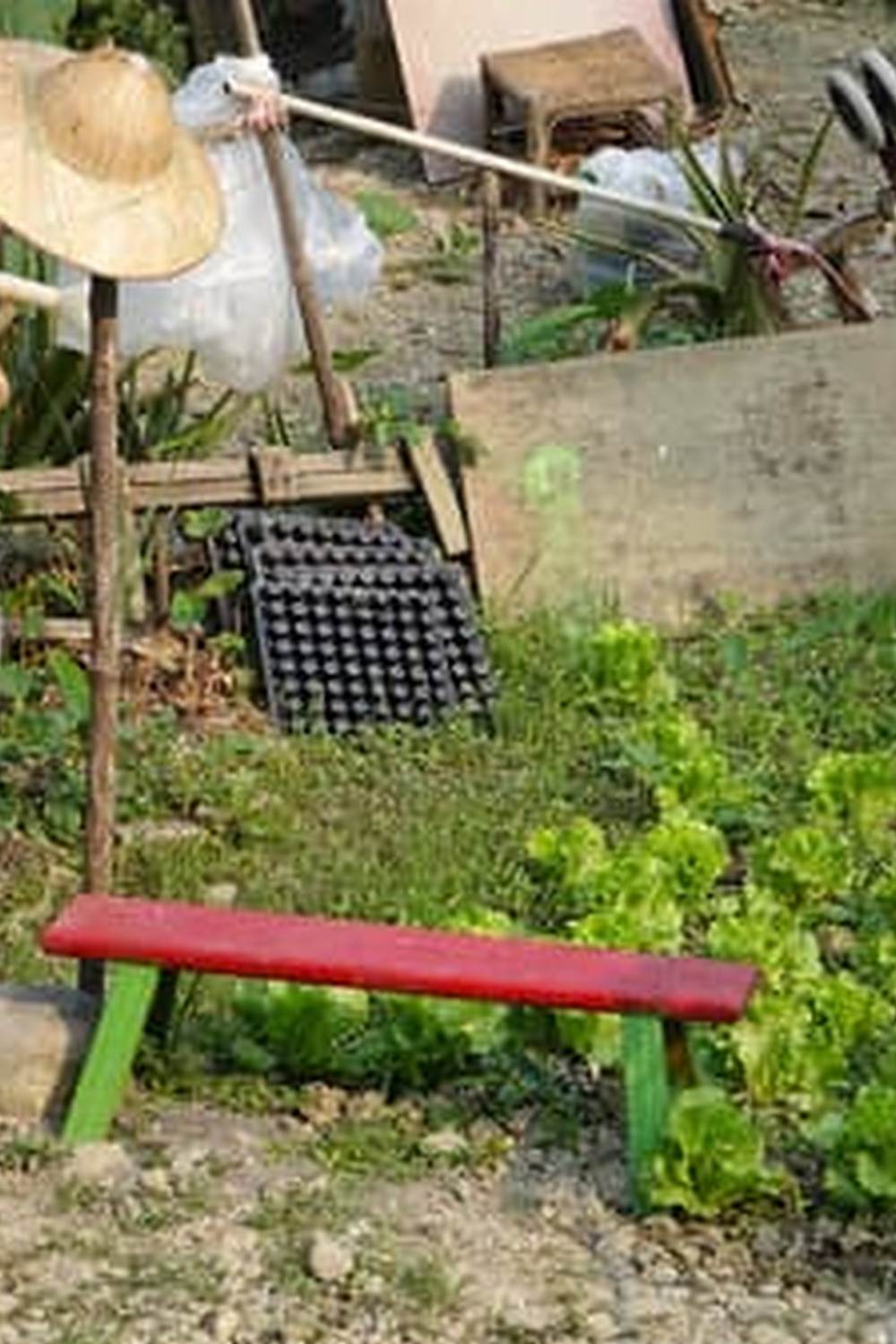Vegetable gardens in malls have become an increasingly popular trend in recent years, blending the hustle and bustle of shopping centers with the tranquility of green spaces. These innovative initiatives offer shoppers a unique experience that goes beyond just retail therapy. By incorporating lush vegetation and thriving plant life right within the confines of a mall, visitors can connect with nature and enjoy the benefits of a sustainable environment.
The concept of vegetable gardens in malls not only adds aesthetic appeal but also serves as a hub for promoting sustainability and healthy living. By cultivating fresh produce in these urban settings, mall-goers have access to locally grown fruits and vegetables, reducing the carbon footprint associated with transportation and packaging. Additionally, these green spaces contribute to improving air quality, providing a breath of fresh air amidst the concrete jungle.
As more shopping centers embrace the idea of incorporating vegetable gardens within their premises, it is essential to understand the advantages they bring. From promoting environmental awareness to fostering community engagement, these green oases offer a plethora of benefits. In the following sections, we will delve deeper into why vegetable gardens in malls are gaining momentum and how they contribute to creating vibrant and sustainable spaces for all to enjoy.
Benefits of Vegetable Gardens in Malls
Vegetable gardens in malls offer a wide range of benefits that go beyond just providing fresh produce. These green spaces can enhance the overall shopping experience for visitors and contribute to a more sustainable and environmentally friendly environment within the mall. Here are some key advantages of having vegetable gardens in shopping centers:
- Health Benefits: Having access to fresh, organically grown vegetables can encourage people to make healthier food choices. Visitors can also enjoy the therapeutic benefits of being surrounded by greenery while shopping.
- Sustainability: By growing vegetables indoors, malls can reduce their carbon footprint by minimizing transportation costs and emissions associated with importing produce from outside sources. This promotes local food production and reduces reliance on long-distance supply chains.
- Educational Opportunities: Vegetable gardens in malls provide a unique learning experience for both children and adults. Visitors can learn about different types of plants, gardening techniques, and the importance of sustainability in a hands-on environment.
In addition to these benefits, vegetable gardens in malls also serve as a visual attraction that sets them apart from traditional shopping centers. The presence of lush greenery and colorful vegetables can create a welcoming and relaxing atmosphere for shoppers, encouraging them to spend more time exploring the mall.
Moreover, these green spaces contribute to air purification and humidity regulation within the indoor environment, improving overall air quality and creating a healthier space for all visitors. With the growing emphasis on sustainability and environmental consciousness, vegetable gardens in malls are becoming increasingly popular as a way to promote healthy living practices while adding value to the overall mall experience.
- Strengthening Community Connections: Vegetable gardens in malls have the potential to bring people together through shared gardening activities or workshops. These spaces can serve as a gathering point for social interactions among mall visitors, fostering a sense of community and belonging.
- Promoting Local Agriculture: By showcasing locally grown produce within the mall setting, these vegetable gardens support local farmers and promote sustainable agricultural practices. This direct connection between consumers and growers helps build awareness of where food comes from and encourages support for local businesses.
- Aesthetic Appeal: The presence of vibrant vegetable gardens adds visual interest to the mall environment, creating an attractive backdrop for shoppers. The sight of blossoming plants and colorful vegetables against modern architecture enhances the overall aesthetic appeal of the shopping center, making it a more inviting place for visitors to relax and unwind.
Location Selection
Another important aspect to take into account when choosing a location for a vegetable garden in a mall is foot traffic. Placing the garden in a high-traffic area can attract more visitors and increase community engagement. Consider areas near entrances, food courts, or common spaces where people tend to gather. This strategic placement can not only enhance the aesthetic appeal of the mall but also create a vibrant and inviting atmosphere for shoppers.
Furthermore, proximity to water sources should be considered when selecting a location for a vegetable garden in a mall. Access to water is crucial for watering the plants and ensuring their health and vitality.
Choose a spot that is close to water outlets or install irrigation systems nearby for easy maintenance. By carefully selecting the location for the vegetable garden within the mall, you can create a sustainable green space that enhances the overall shopping experience while promoting environmental awareness and sustainability initiatives.
| Aspect | Consideration |
|---|---|
| Natural Light | Choose spot with sufficient sunlight |
| Foot Traffic | Select high-traffic area for more visibility |
| Water Source | Proximity to water outlets or irrigation systems |
Design and Layout
Designing and arranging a vegetable garden in a mall setting requires careful planning and consideration to ensure that the space is utilized effectively and efficiently. The layout of the garden should not only be visually appealing but also functional to provide a conducive environment for the plants to grow and thrive.
Utilizing Vertical Spaces
One of the best practices for designing a vegetable garden in a mall setting is to make use of vertical spaces. Vertical gardening allows for more plants to be grown in a limited area, maximizing the available space. Trellises, hanging planters, and wall-mounted containers can all be utilized to create a lush green in an otherwise empty wall or corner of the mall.
Zoning and Segmentation
Another important aspect of designing a vegetable garden in a mall is zoning and segmentation. By dividing the garden into different areas based on plant types or functions, such as herbs, leafy greens, or root vegetables, it makes it easier to manage and maintain the garden. It also provides visitors with an organized and cohesive experience as they navigate through the various sections of the garden.
Creating Pathways and Seating Areas
In addition to planting beds, pathways, seating areas, and gathering spots can be incorporated into the design of the vegetable garden in a mall. This allows visitors to interact with nature up close, relax amidst greenery, and appreciate the beauty of growing vegetables. These elements enhance the overall experience of visiting the mall and encourage community engagement around sustainable practices like gardening.
Overall, by paying attention to details such as vertical spaces utilization, zoning and segmentation, as well as creating pathways and seating areas within the design of vegetable gardens in malls can transform them into not just functional spaces but also attractive features that contribute positively to both visitors’ experiences shopping centers as well as enhancing environmental consciousness within communities.
Plant Selection
When it comes to choosing the right plants for vegetable gardens in malls, it is essential to consider several factors such as lighting, space, and maintenance requirements. Leafy greens like lettuce, spinach, and kale are popular choices for indoor gardening due to their ability to thrive in limited sunlight conditions.
These vegetables also have shallow root systems, making them suitable for containers or raised beds commonly found in mall settings. Additionally, herbs such as basil, oregano, and parsley are great options for adding flavor to dishes while requiring minimal space to grow.
Incorporating fruit-bearing plants like tomatoes, strawberries, and peppers can also be a rewarding experience for mall vegetable gardens. While these plants may require more sunlight than leafy greens, strategic placement near windows or skylights can provide the necessary light exposure for a successful harvest. Furthermore, ornamental plants like succulents and air-purifying varieties can enhance the overall aesthetics of the garden while improving air quality within the mall environment.
For those looking to add a touch of creativity and uniqueness to their vegetable gardens in malls, exotic or rare plant varieties can be considered. Plants like dragon fruit cacti, microgreens, or even edible flowers such as nasturtiums can create a visually appealing display that attracts visitors and sparks curiosity.
By carefully selecting a diverse range of vegetables and plants based on their growth requirements and visual appeal, mall vegetable gardens can offer an enriching educational experience for both shoppers and staff alike.
| Vegetables/Plants | Growing Conditions |
|---|---|
| Lettuce | Low light; Shallow roots |
| Tomatoes | Requires sunlight; Fruit-bearing |
| Basil | Minimal space; Adds flavor |
| Cacti (e.g. Dragon fruit) | Succulent; Exotic option |
Maintenance and Care
When it comes to maintaining vegetable gardens in malls, proper care and attention are essential to ensure that the plants thrive and flourish. Regular maintenance routines can help keep the garden looking vibrant and healthy, attracting shoppers and visitors alike. Here are some tips and tricks for taking care of vegetable gardens in mall settings:
- Watering: Proper watering is crucial for the health of the plants in a mall vegetable garden. Make sure to water consistently but avoid over-watering, as this can lead to root rot.
- Pruning: Regular pruning helps promote growth and ensures that the plants remain healthy. Remove any dead or damaged leaves, stems, or flowers to encourage new growth.
- Fertilizing: Provide necessary nutrients by fertilizing the soil periodically. Choose a fertilizer that is suitable for indoor gardening and follow the instructions carefully.
In addition to these basic maintenance tasks, pest control is another important aspect of caring for vegetable gardens in malls. Indoor gardens can still be susceptible to pests, so it’s essential to monitor plants regularly for any signs of infestation. Utilize natural remedies or organic insecticides when dealing with pests to avoid harmful chemicals near food-producing plants.
Proper lighting is also crucial for the health of your mall vegetable garden. Ensure that plants receive adequate sunlight each day or use artificial grow lights if natural light is limited within the shopping center. By following these maintenance tips and tricks, you can create a thriving and flourishing vegetable garden in a mall setting that not only enhances the overall aesthetics but also provides fresh produce for visitors to enjoy.
Community Engagement
Workshops and Classes
One way to engage the community with vegetable gardens in malls is by organizing workshops and classes related to gardening, sustainable living, and healthy eating. These sessions can be led by experts who provide valuable tips and information on how to cultivate vegetables in indoor settings. Participants not only learn new skills but also have the opportunity to connect with like-minded individuals in a collaborative environment.
Community Events
Hosting community events such as farmers’ markets, harvest festivals, or cooking demonstrations using produce from the mall’s garden can attract people from different backgrounds. These events create a lively atmosphere within the mall, drawing shoppers who are interested in locally grown food and sustainable practices. Additionally, it promotes small businesses and vendors who sell fresh products sourced from the garden.
Educational Programs
Incorporating educational programs for schools and youth groups can further enhance community engagement with vegetable gardens in malls. By offering guided tours, interactive exhibits, or school projects related to gardening and plant care, children can learn about environmental sustainability and healthy eating habits firsthand. These initiatives not only educate the younger generation but also instill a sense of responsibility towards nature conservation.
Overall, fostering community engagement through vegetable gardens in malls creates a dynamic space where people can come together, learn, and appreciate the benefits of urban agriculture. By involving residents in various activities and initiatives centered around the garden, shopping centers can build stronger relationships with their local communities while promoting environmental awareness and sustainable practices.
Case Studies
In recent years, vegetable gardens in malls have become a popular trend across the globe, offering a unique and sustainable way to connect urban communities with nature. One successful example of this innovative concept is found in Tokyo, Japan, where the Sunshine City shopping complex houses a thriving vegetable garden on its rooftop.
This green oasis not only provides fresh produce for local restaurants but also serves as an educational space for visitors to learn about urban gardening and sustainability practices.
Another inspiring case study can be found in Singapore, where the Sembawang Shopping Centre has incorporated a vegetable garden into its design, complementing the retail experience with a touch of greenery and freshness. The mall’s rooftop garden offers shoppers the opportunity to relax in a tranquil setting surrounded by lush plants and vibrant vegetables. This initiative has not only enhanced the overall shopping experience but has also promoted sustainable living practices within the community.
Furthermore, in New York City, the Essex Street Market stands out as a prime example of how vegetable gardens in malls can positively impact local communities and environments. By hosting pop-up farmers’ markets and gardening workshops, this market has created a hub for urban agriculture enthusiasts while fostering relationships between city dwellers and local food producers.
The presence of vegetable gardens within the mall setting has encouraged healthier eating habits among residents and helped reduce food miles by promoting locally grown produce.
Future Trends
As we look towards the future, the concept of vegetable gardens in malls is expected to continue evolving and becoming even more prevalent in our shopping centers. The trend of incorporating green spaces with plants and vegetables within malls is likely to grow as people become more conscious about sustainable living, healthy eating, and environmental responsibility.
The benefits of having these indoor gardens go beyond just aesthetics, as they provide a breath of fresh air in urban settings and promote a sense of well-being among visitors.
One of the key aspects that will shape the future of vegetable gardens in malls is the focus on sustainable practices and eco-friendly initiatives. As more malls aim to reduce their carbon footprint and adopt green strategies, incorporating vegetable gardens becomes an attractive option.
By growing their own produce on-site, malls can reduce food miles, promote local agriculture, and offer customers fresh, organic options right at their doorstep. This emphasis on sustainability aligns with the increasing demand from consumers for environmentally responsible businesses.
Furthermore, community engagement will play a significant role in the evolution of vegetable gardens in malls. These green spaces have the potential to bring people together, create a sense of belonging, and foster a shared appreciation for nature.
Whether through workshops, educational programs, or volunteer opportunities, vegetable gardens can serve as a hub for social interaction and environmental awareness. As more malls recognize the value of connecting with their local communities through these initiatives, we can expect to see an increase in collaborative efforts that enhance the overall shopping experience while promoting health and wellness through urban gardening.
Frequently Asked Questions
Where Is the Best Place for a Vegetable Garden?
The best place for a vegetable garden is one that receives at least six hours of sunlight daily and has well-draining soil. Ideally, it should be close to a water source for easy irrigation and maintenance.
What Is a Cheap and Easy Vegetable Garden?
A cheap and easy vegetable garden can be created using containers on a sunny balcony or patio. This allows you to control the soil quality, sunlight exposure, and water levels easily. Additionally, container gardening requires minimal tools and space.
What Is the Best Layout for a Vegetable Garden?
The best layout for a vegetable garden depends on the space available and the types of vegetables you want to grow. Some popular layouts include raised beds, square foot gardening, or traditional rows with pathways in between. Consider factors like sun exposure, watering needs, and companion planting when planning your garden layout.

If you’re looking to get into vegetable gardening, or are just looking for some tips on how to make your current garden better, then you’ve come to the right place! My name is Ethel and I have been gardening for years. In this blog, I’m going to share with you some of my best tips on how to create a successful vegetable garden.





